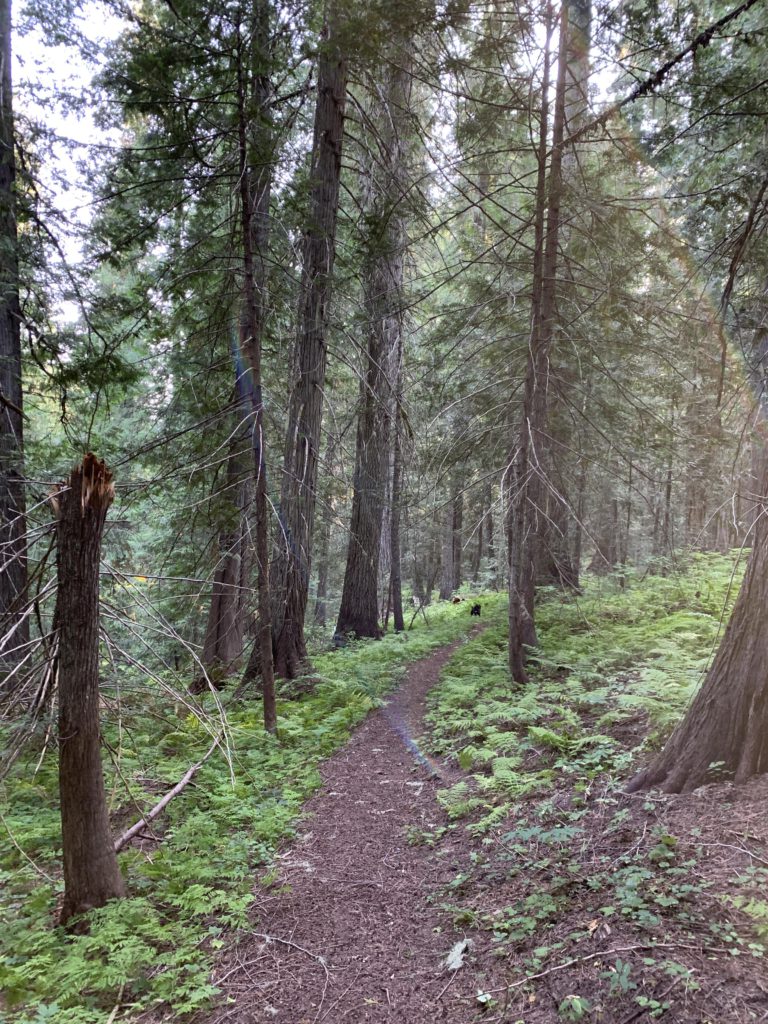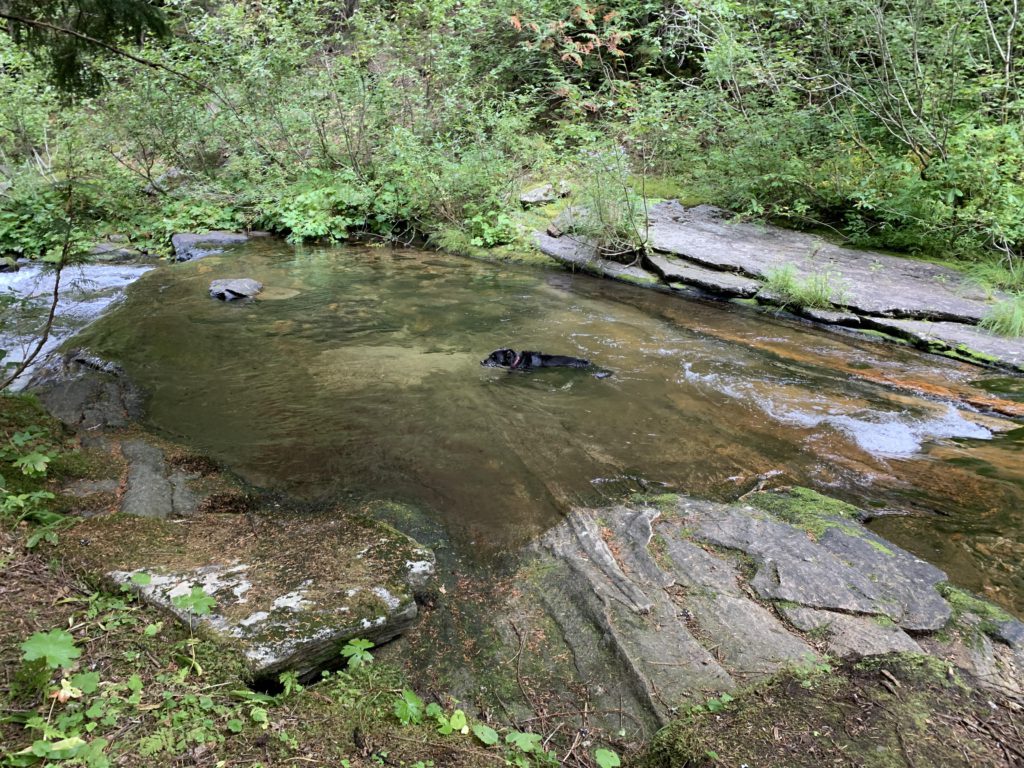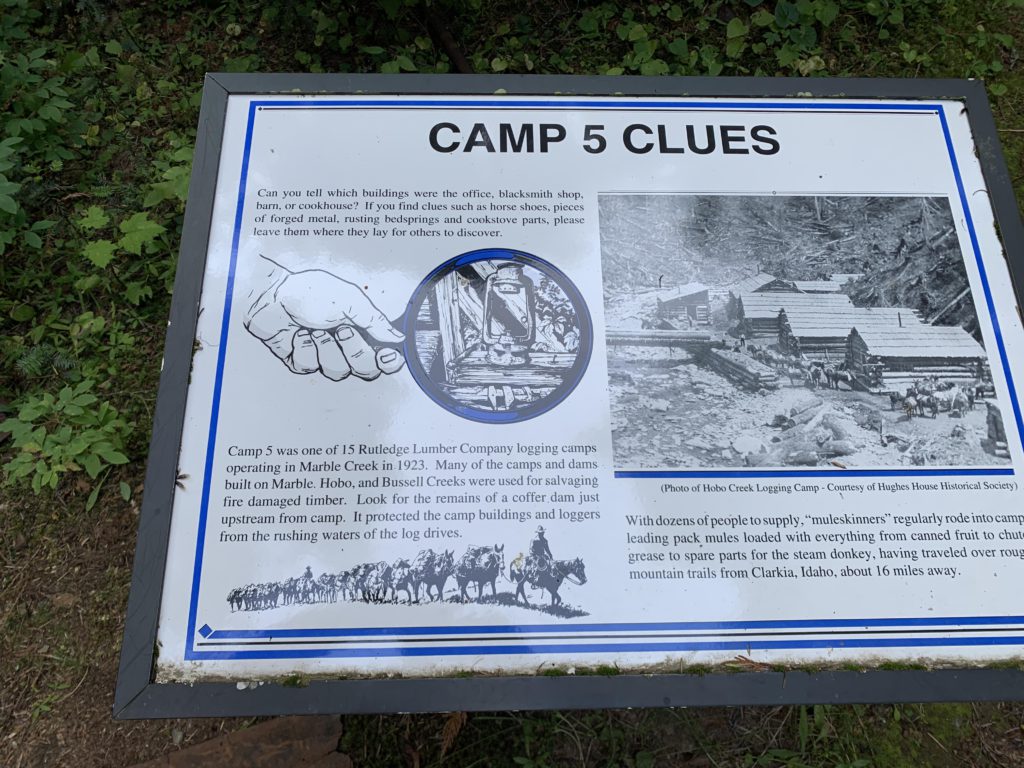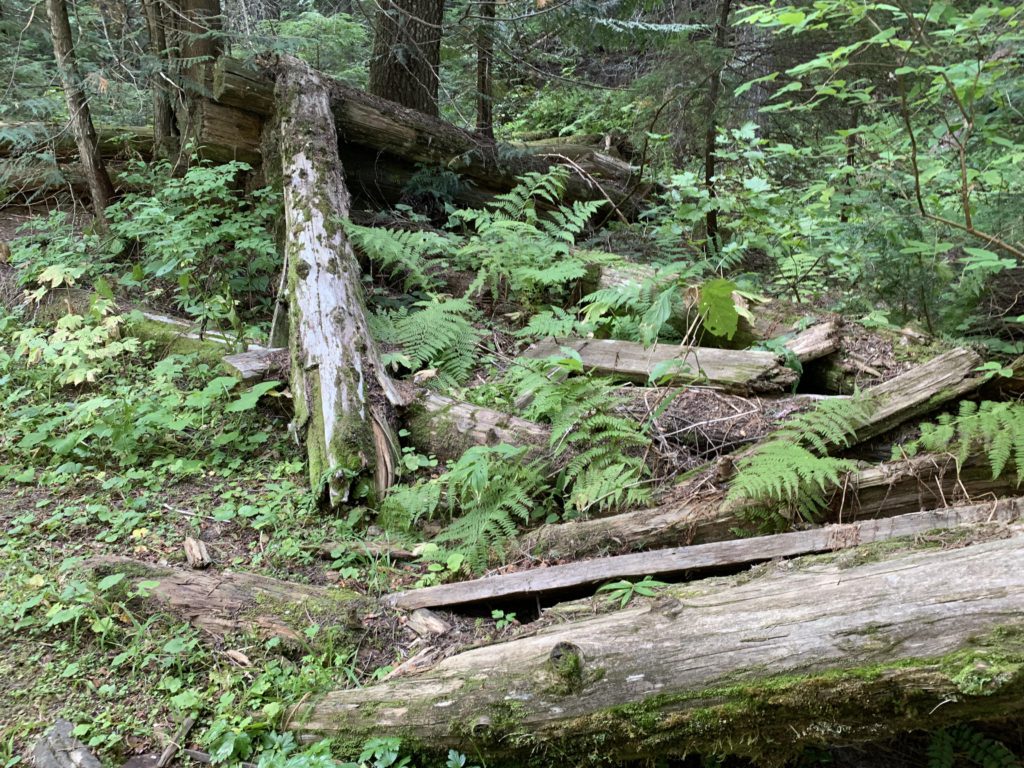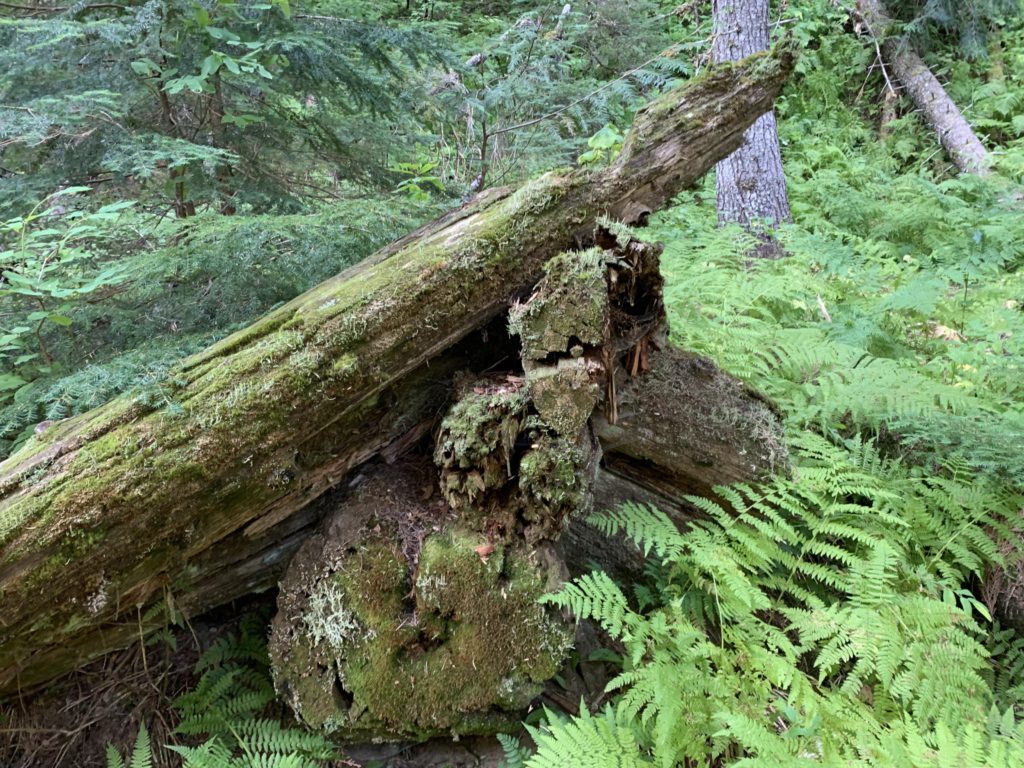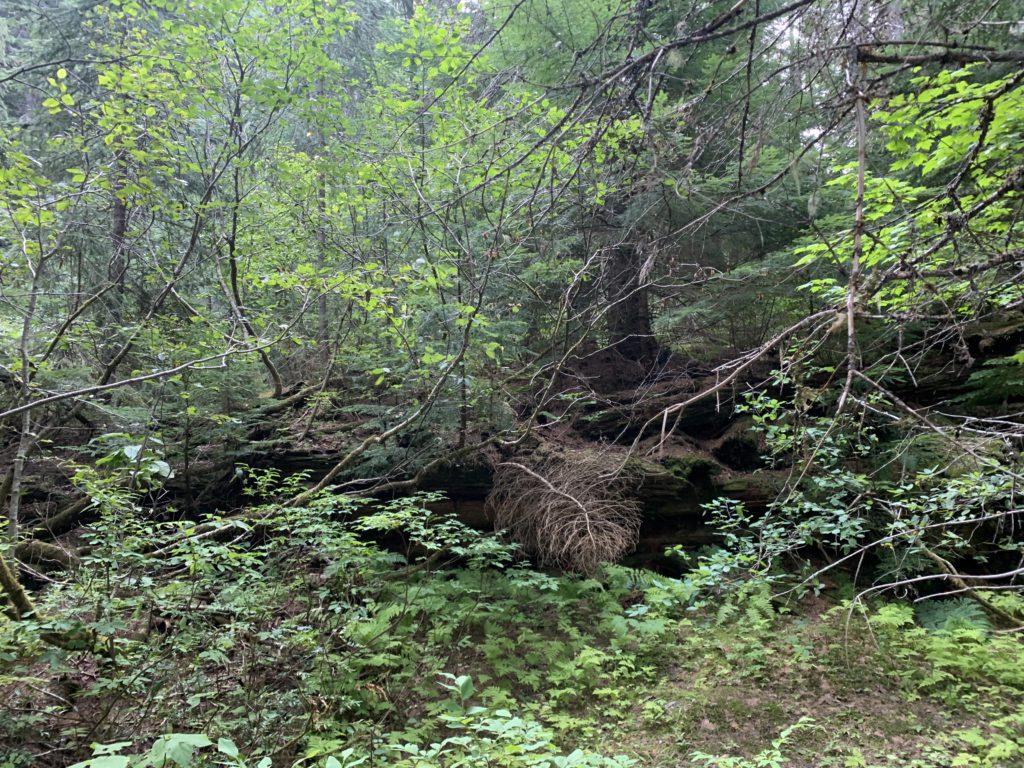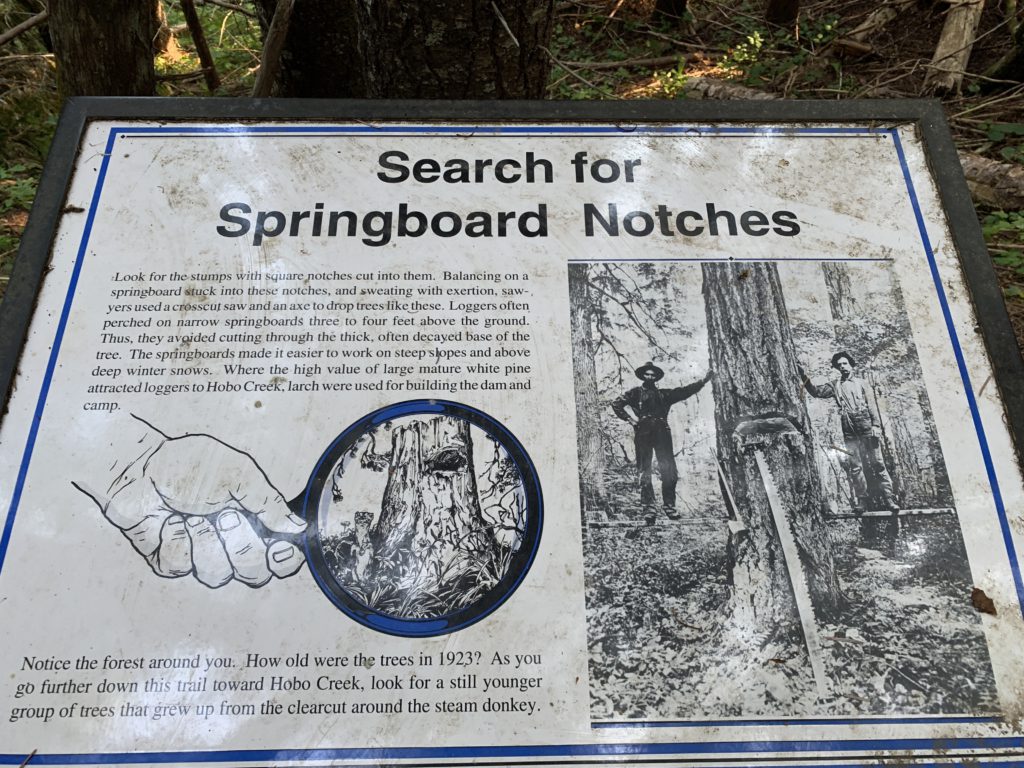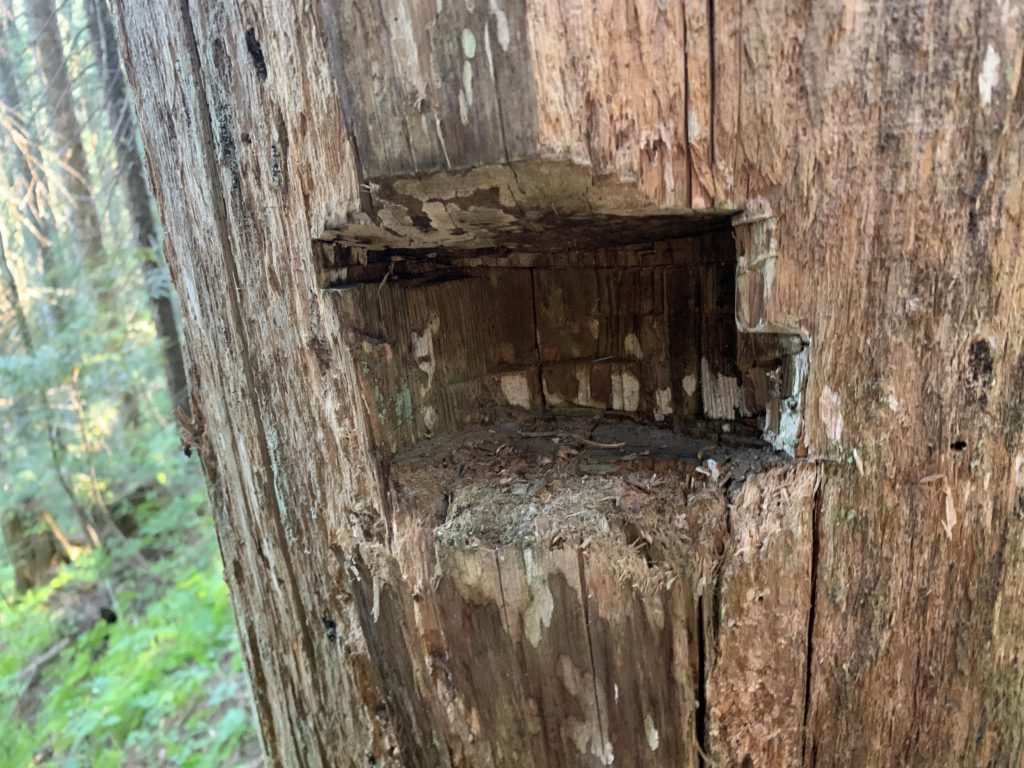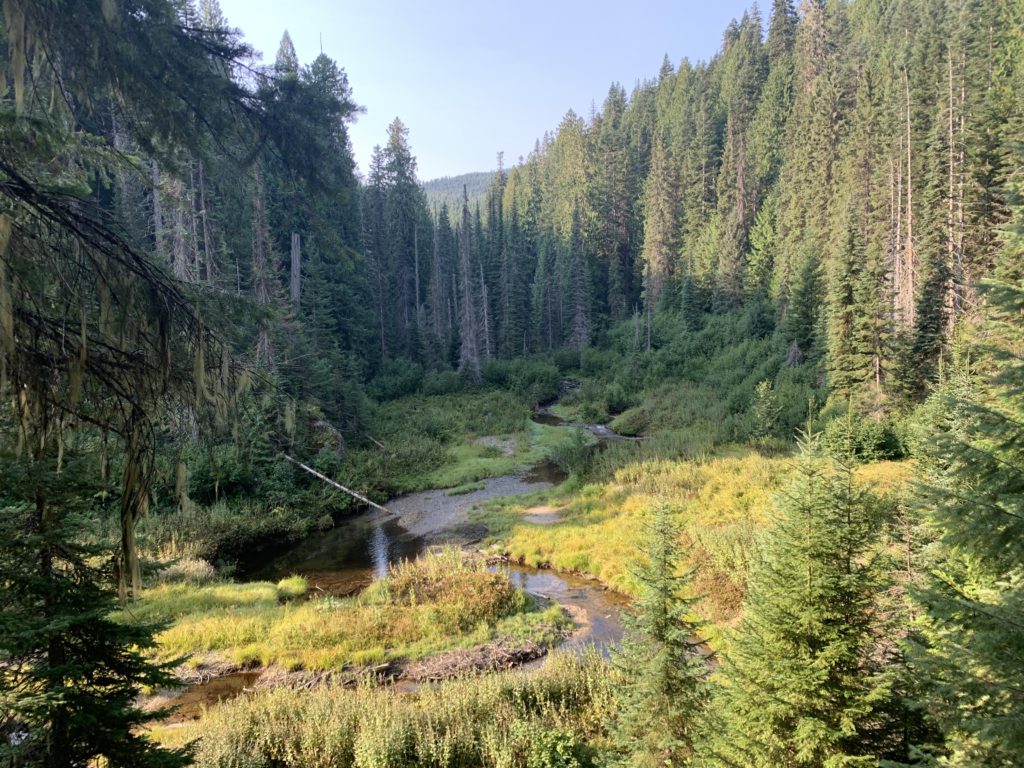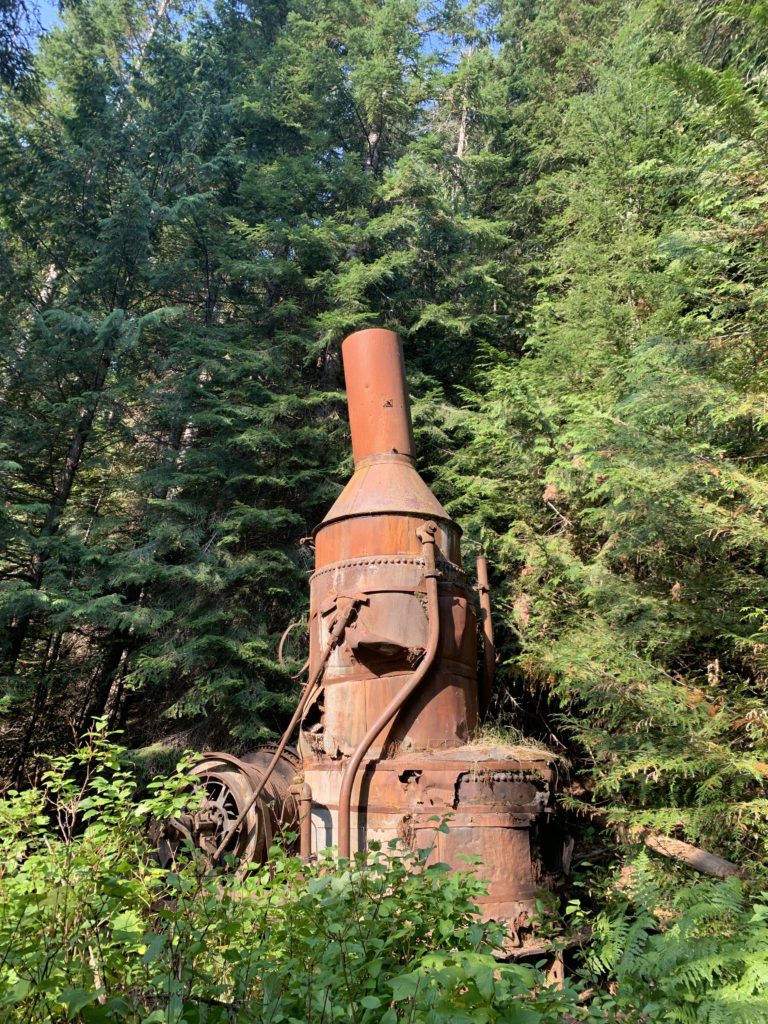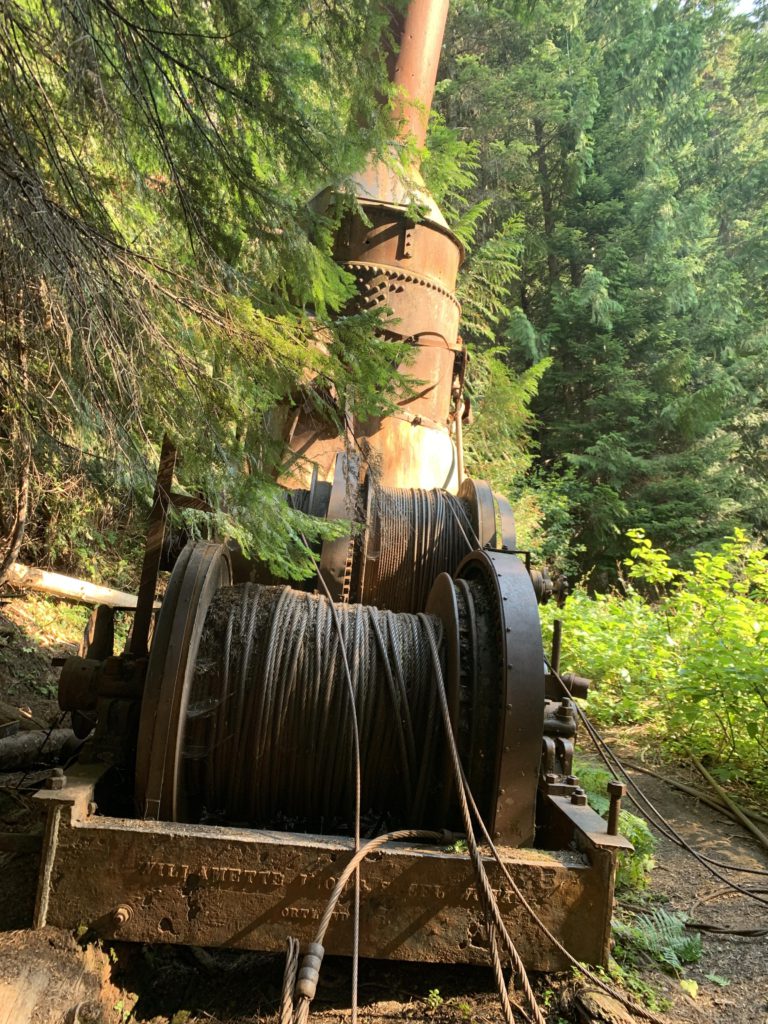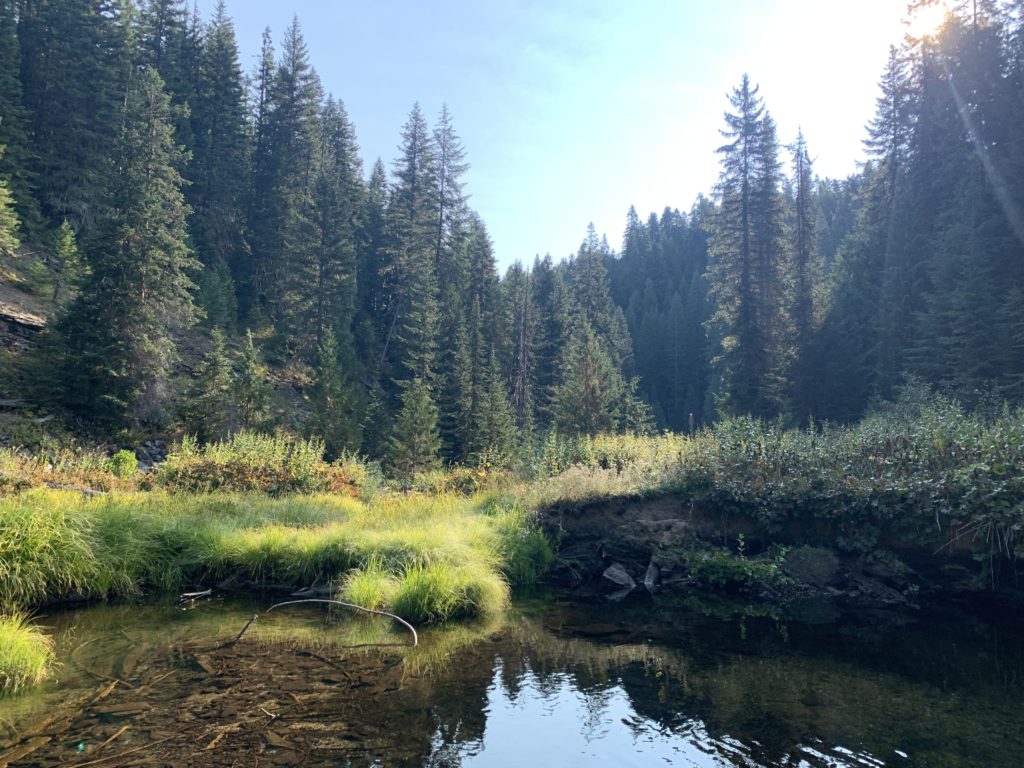- Clearwater Mountains
- There is a pit toilet at the trailhead. Car camping sites are nearby (Camp #3)
- Excellent
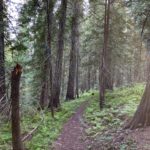
The trail immediately enters a cedar forest and gives you a choice of a clockwise or counterclockwise route. We chose clockwise, dropping steadily lower for a bit over half a mile to a junction, with the left fork dropping lower yet to an old logging camp perched on an elbow of Marble Creek. There is not much left of the buildings, with a few moss-covered logs outlining the location of the buildings and rusting pieces of metal strewn across the forest floor and hidden by lady fern. On the east side is a decaying coffer dam that once protected the buildings. Per the placard, Rutledge Lumber Company operated 15 such camps in the Marble Creek drainage in 1923.
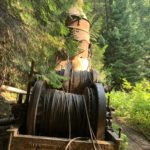
Climbing back up to the fork and taking the other branch takes you to a series of tree stumps with notches hewn into them to accommodate “springboards”. Loggers stood on these springboards, 3-4 feet above ground, and cut down the trees to avoid the wider width at the bottom. Continuing on, the trail once again drops down to creek level, where you will find the remains of a splash dam and a rusting “steam donkey”; machinery used to haul logs. A second steam donkey, once located a mile upstream, was moved to St. Maries. A short spur trail leads to what is left of the splash dam (not much). The main trail then climbs back up to the trailhead through fairly dense forest that more than likely was clearcut a century ago.
Alternate Routes
Things to Consider
- There are other sites showcasing the area’s logging past, including splash dams, logging camps, steam donkeys, sawmills, and railroads. Consider Cornwall Historical Trail, Lines Creek Historical Trail, and Delaney Creek Historical Trail. Refer to the USFS pamphlet for details
Not so great
